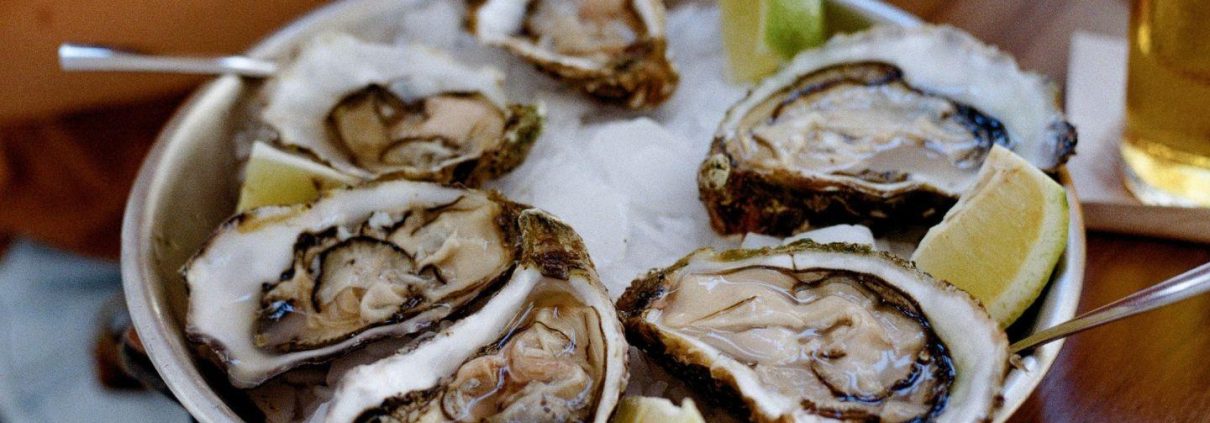Oysternomics: New Report Highlights Economic Impact of Oysters in North Carolina
by Frank Graff on January 5, 2024 | Reprinted from PBS North Carolina

Oysters, More Than Just Good Eating
There are plenty of oyster fans in North Carolina and for good reason. Fried oysters, oysters on the half shell, oysters in stews and dressings—it’s all good.
But there are many other reasons to love oysters. Oysters help clean the water; one oyster can filter 50 gallons of water. Oyster reefs provide habitat for small fish and protect the coastline from storm damage and erosion. Oysters are also part of North Carolina’s heritage.
“Oysters benefit our state in myriad ways,” said Jane Harrison, a coastal economics specialist with North Carolina Sea Grant. “They are significant in our ecology, culture and economy.”
It’s safe to say our favorite mollusk does a lot. And a new report from North Carolina Sea Grant shows the value of oysters to North Carolina’s economy.”
Oysters by the Numbers
In 2022, North Carolina’s wild and farmed shellfish industry contributed $31.7 million to the state’s economy, North Carolina Sea Grant found. The farmed oyster industry provided almost half of that, $14.6 million, and created 283 jobs. The report shows the farmed part of the oyster industry is now the most important component of the shellfish sector in the state.
“We have more than 300 oyster and clam farms along the coast, and because they are using more efficient technology than in past years, they have defied the odds to become profitable,” adds Harrison. “It’s exciting to see the exponential growth of these small family farms, especially in producing such a delicious and environmentally important and sustainable seafood.”
Nearly 55,000 bushels of oysters came from state aquafarms in 2022. (There are about 100 oysters in a bushel.) That’s up 19% from the previous year and an increase of more than 500% from 2012. It’s also a new high for the industry, according to the report.
“Oysters are great for everybody: they are great for the economy, they are great for the environment, they are great for the palate, so the more the better,” said Ana Zivanovic-Nenadovic, chief program director with the North Carolina Coastal Federation.
Big Plans to Grow the Oyster Industry
Overharvesting, disease and pollution devastated the oyster industry over the past century. And for years, oyster advocates have pushed the state to invest in the oyster industry and restore the reefs that used to dominate the coastline. They say the new report shows their efforts are paying off.
The commercial oyster industry’s growth is now so strong, North Carolina Sea Grant, the North Carolina Coastal Federation and other advocates believe the industry can contribute $100 million to the economy by 2030.
Part of the growth plan involves the construction of a shellfish aquaculture hub in Carteret County. Work should start in the summer of 2024.
The goal of the aquaculture hub is to have enough space for growers to not only collaborate, but also to store gear and put their products in refrigeration on the waterfront.
Federal law requires oysters to be taken from the water and put into mechanical refrigeration within five hours.
“Small growers have a hard time filling very large orders because there is only so much work you can do on a small boat, and there’s only so much you can do inside that five-hour time window,” Chris Matteo, with the North Carolina Shellfish Growers Association, told Coastal Review.
If the hub is successful and the oyster industry continues to grow, more hubs are planned throughout the state.




